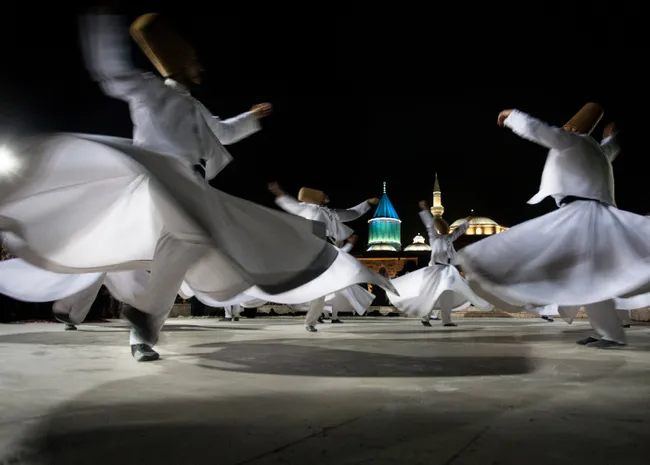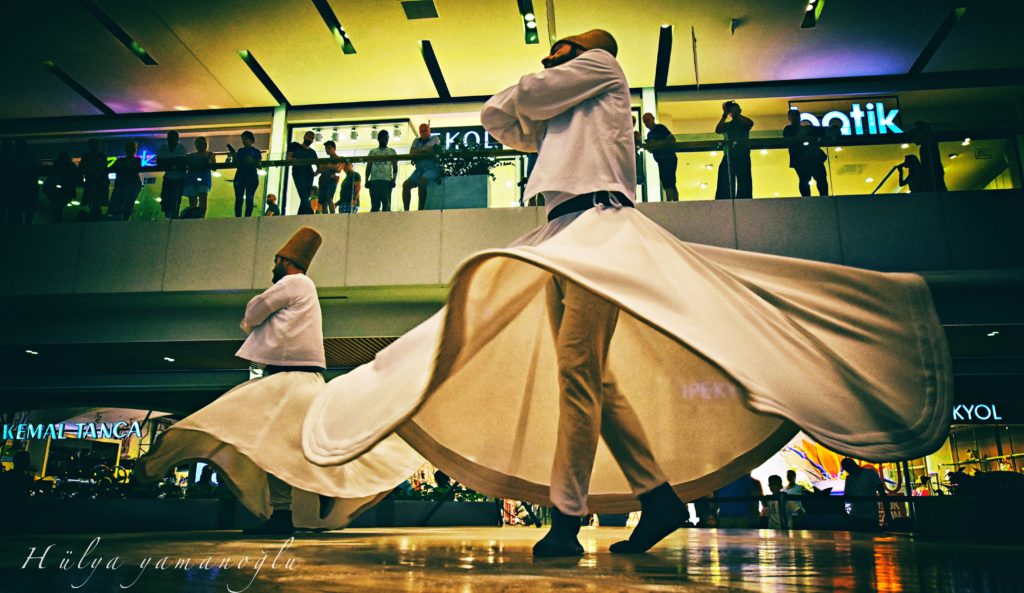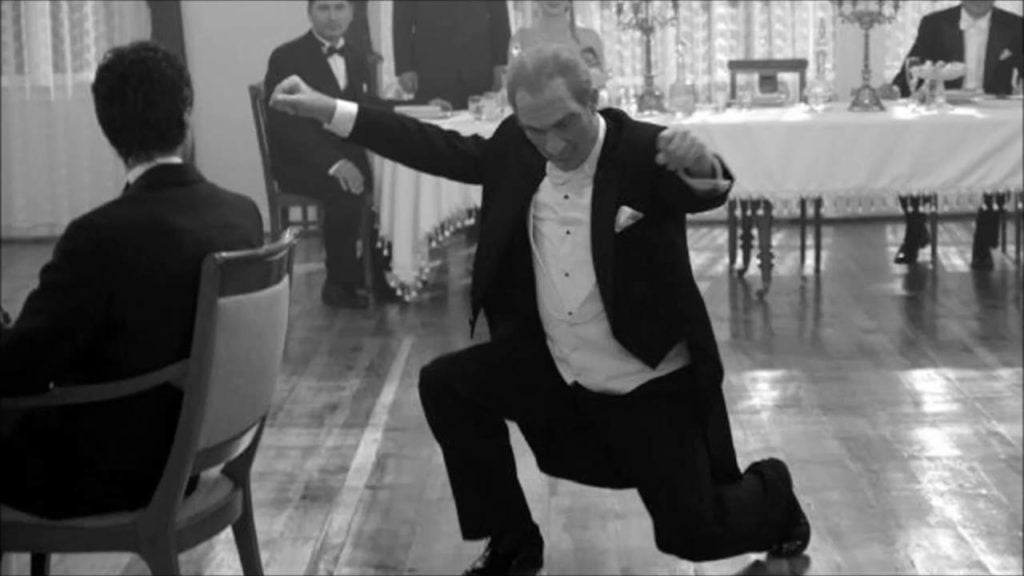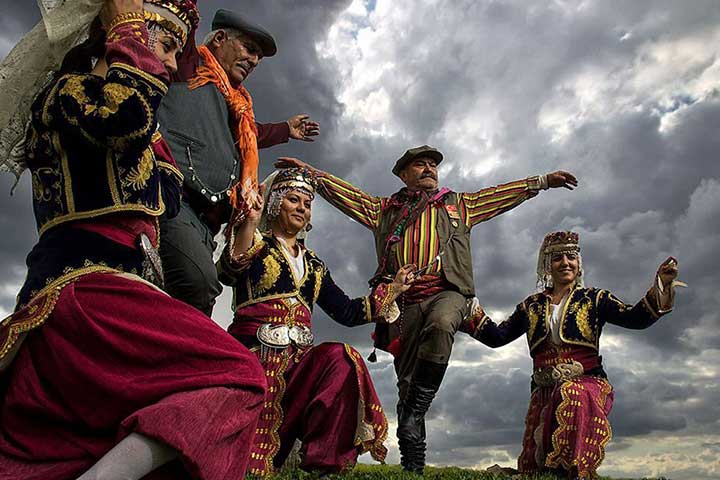If belly dancing is the only dance form you associate with Türkiye, you must prepare yourself for a surprise.
Türkiye has a rich tradition of folk dancing with dances performed on all social occasions.
Some dances reflect natural events or daily life; others portray societal events and affairs of the heart.
Let’s take a closer look at some of the types of dance you will see in Türkiye.
Mevlana – Whirling Dervishes
The ‘dance’ of the Mevlevi Dervishes, or Whirling Dervishes as they are known in the west, is called Sema (seh-MAH) and is a part of the inspiration of Mevlana and has become part of Turkish custom, history, beliefs and culture.

The Mevlevi Dervishes still practise their ceremonies in Konya where the order was first established by the 13th-century Sufi mystic Mevlana Celaleddin Rumi. He was a poet who believed that music and dance provided the means to enter a religious state of ecstasy thereby discovering divine love.

The Dervishes whirl with one arm up in the air and the other arm pointing down which means they reach God with one hand and pass the love they have received from him to the earth with the other. They wear long, conical-shaped hats and white robes. It is awe-inspiring to watch the Dervishes performing, whirling for hours on end with the white skirts of their robes undulating gracefully.
Turkish Folk Dancing
It isn’t easy to talk about a typical Turkish folk dance as each region has its own, quite distinct from the others.
Zeybek
Zeybek is the most popular dance in Western Türkiye, and one of the most popular in the country. There are said to be over 150 different Zeybek dances, varying by region and type – fast, slow, solo man and solo woman, group, couple, etc. Most are solo men’s dance however, women also dance Zeybek in what seems to be a growing trend.

Zeybek dances can be performed with male and female dancers together however, there are parts that only male or female dancers dance.
Most of the Zeybek dances start with a part called “strolling around”. The dancers move in a circle as if testing the ground and then dip and touch the ground with one knee. They hold their arms at their sides first, bringing them to shoulder level later on and snapping their fingers at the same time.

The rhythm of the music can either be slow or quick. The musical instruments are usually shrill pipes accompanied by a drum, a lute with three double strings or two-three strings and an earthenware kettle drum.
Greek Zeybekiko is a direct descendent of the Turkish Zeybek. There are similarities in the dance, but the Greek version came to Greece with the flood of Rebetiko types in the 1920s, and quickly morphed into an urban, highly individualistic dance – quite different from the more traditional, rural Turkish dance.
Horon
Horon, or the round dance, is a traditional folk dance of the Black Sea region. The ancient koron-horon, originally of pagan worship, was a sacred ritual dance and was performed by men only.

The Horon is generally danced by a chain of either men or women who form a line or semi-circle. The Horon has one of the most characteristic movements which is a fast shoulder shimmy (tremoulo) and a trembling of the entire body and sudden squats, which imitates the movements of a fish called the hamsi (a type of anchovy) as it swims in the sea or struggles in the nets for its life.
Horons are danced to the music of the cura zurna, cura davul, tulum, kemence, koltuk davulu, and even the accordion.
It is said that long sea journeys, merchant exchanges and troops en route to the Holy Land were also exposed to these dance styles. It is thought the Irish jig and even its modern version, the River Dance, may have roots in the Horon.
The Horon, although somewhat different from its Pagan days is still danced and is recognizable by its music, up-raised arms, shimmies and kicks.
Halay
This folk dance is performed in central and south-east Anatolia and it is one of the most striking dances.
Typically, Halay dancers form a circle or a line, while holding each other with the little finger or shoulder to shoulder or even hand to hand with the last and first player holding a piece of cloth.

The music for the dance is performed on drums as well as zurnas, a loud, double reed wind instrument, and often will include pipes, smaller reeds, and other native musical instruments.
The Halay was traditionally only danced by men at wedding ceremonies, but it is now used in other celebrations as well. It is very rhythmic and is generally based on a stiff standing pose and a quick bending of the knees.
Everyone involved moves as one person. As the dance progresses, people will add their own hops, shakes, and pauses. Occasionally folk songs are sung along with the movement. The Halay is a great show of the talent and inventiveness of the participants.
Sources: Wikipedia/Turkish Folk Dance/Big Love Turkey/Culture Shock Turkey
This article was first published on 15 September 2021.









One Response
nice post